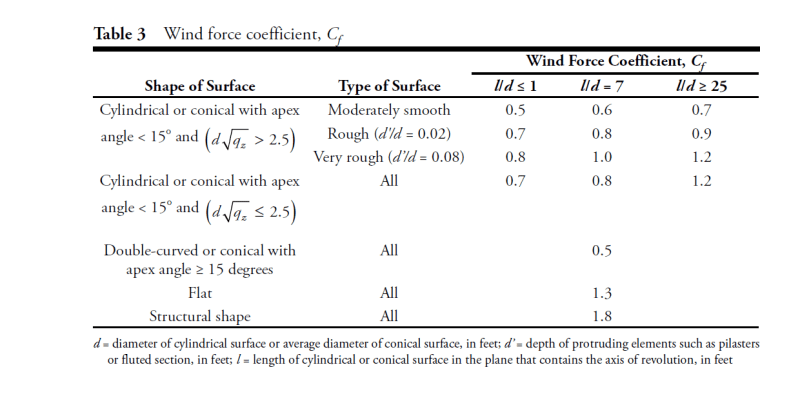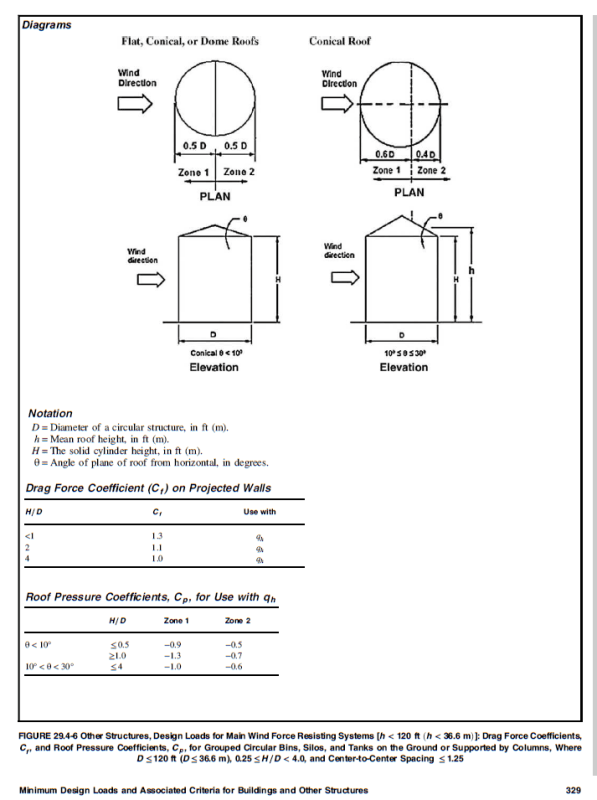I am working on a structural analysis for a water tower and am looking for clarification on calculating the wind force coefficient Cf. Table 3 provides values to use based on the L/d ratio, and defines L as the length of cylindrical or conical surface in the plane that contains the axis of revolution. In the commentary, there's a provided figure that depicts the height zones and where you should take cuts to apply the appropriate Kz. Should the L value be the height of the centroid with respect to the ground, the overall height of the structure, or the distance between the two different elevations for the respective cut?
The confusion is coming from some of the figures in chapter 29 of ASCE 7-16, which is what AWWA D100-21 is based upon. In ASCE the Cf (and the roof pressure coefficient, Cp, are based on the on the solid cylinder height.



Thanks in advance for the help!
The confusion is coming from some of the figures in chapter 29 of ASCE 7-16, which is what AWWA D100-21 is based upon. In ASCE the Cf (and the roof pressure coefficient, Cp, are based on the on the solid cylinder height.



Thanks in advance for the help!
